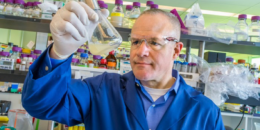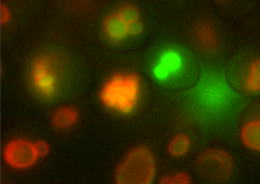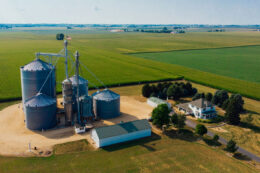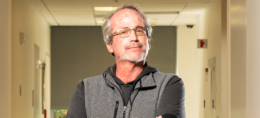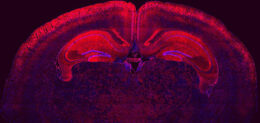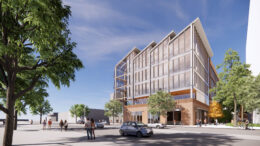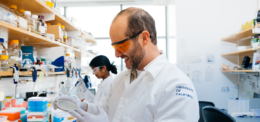Synthetic and Systems Biology

Berkeley is a pioneer in synthetic biology, which involves the design and construction of parts, devices and systems from biological components, generally at the cellular and molecular scale. Frequently this involves editing the genome of a microorganism to produce a desired chemical compound, or changing their behavior to fight diseases inside the body.
Systems biology approaches living systems as dynamic networks rather than collections of individual units, and aims to understand and use these networks to model and design systems which perform valued functions.
A primary application of these closely-related fields is using microbes to manufacture medications, flavorings, dyes and other chemicals in bulk in a cost-effective and environmentally friendly way. Other uses include the design of new medications and specialized chemicals, the creation of advanced tools for organism customization and safety, and road maps for sustainable agriculture and biomanufacturing communities.
Research in synthetic and systems biology has real-world impact in areas like:
Biosafety and ethics, the Environment, gene editing, manufacturing.

Adam Arkin
For more information, see: https://arkinlab.bio/
The Arkin Lab focus is how microbes transform, clean, and improve soils, soils that are currently degrading due to climate change, pollution, and poor water use. Near close-loops, low-energy, low-input biomanufacturing programs for food, pharmaceuticals, and building materials at “small village” scale, which are initially designed for a deep-space crewed Mars mission but have applications here on Earth for supporting sustainable agriculture. Another interest is to develop engineering approaches for microbiomes so we can control communities of microbes that drive the earth’s mineral cycles, support our plants and efficiency and stress responses, and impact the health and food-efficiency of a good many living creatures including ourselves.
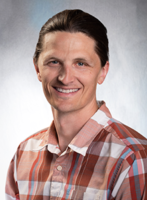
Iain Clark
For more information, see: http://clarklab.berkeley.edu/
The Clark Lab develops microfluidic and molecular methods for the high throughput analysis of single cells. We use these techniques to study HIV latency in CD4 T cells and profile cellular interactions during central nervous system inflammation.
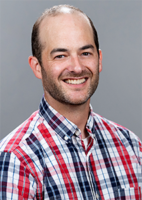
John Dueber
For more information, see: https://dueberlab.berkeley.edu/
The Dueber Lab develops strategies for introducing designable, modular control over living cells. We are particularly interested in generating technologies for improving engineered metabolic pathway efficiency and directing flux. Our projects have applications in the development of biofuels, specialty chemicals, and environmentally friendly processes.

Leah Guthrie
For more information, see: https://www.theguthrielab.com/
The Guthrie lab investigates the principles that govern microbial metabolism and signaling in the context of kidney homeostasis and disease using mass spectrometry, chemoinformatics, and molecular biology approaches.
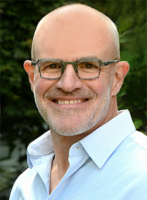
Jay Keasling
For more information, see: https://keaslinglab.lbl.gov/
Metabolic engineering, environmental biotechnology, and biochemical engineering.

Sanjay Kumar
For more information, see: https://kumarlab.berkeley.edu/
Our lab seeks to understand and engineer mechanical and other biophysical communication between cells and materials. In addition to investigating fundamental aspects of this problem with a variety of micro/nanoscale technologies, we are especially interested in discovering how this signaling regulates tumor and stem cell biology in the central nervous system. Recent directions have included: (1) Engineering new tissue-mimetic culture platforms for biophysical studies, molecular analysis, and screening; (2) Exploring mechanobiological signaling systems as targets for limiting the invasion of brain tumors and enhancing stem cell neurogenesis; and (3) Creating new biomaterials inspired by cellular structural networks.
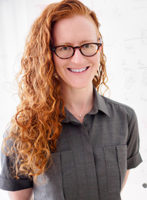
Liana Lareau
For more information, see: http://www.lareaulab.org/
A single genome produces the huge diversity of cells and tissues needed to make a human by regulating gene expression to turn on and off the right genes at the right times. The final, post-transcriptional steps of gene expression — RNA processing and translation — are essential to the proper outcome. Our goal is to understand how these layers of regulation are encoded in gene sequences and how disruptions to this regulation can cause disease. Our research uses machine learning and other computational methods, coupled with high-throughput experiments, to understand how post-transcriptional regulation leads to robust and flexible control of gene expression.
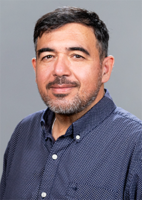
Mohammad Reza Kaazempur Mofrad
For more information, see: https://biomechanics.berkeley.edu/
Molecular and Multiscale Biomechanics; Bioinformatics and Computational Biology; Statistical Machine Learning; Computational Precision Health; Microbiome; Personalized Medicine
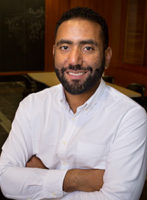
Aaron Streets
For more information, see: https://streetslab.berkeley.edu/
The Streets lab is interested in applying lessons from mathematics, physics, and engineering, to invent tools that help us dissect and quantify complex biological systems. Our goal is to uncover laws that govern the interactions of molecules inside the cell and the interactions between cells in a tissue or organism, by making precision measurements on single cells. In pursuit of this goal, we exploit three core technologies; microfluidics, microscopy, and genomics.
News About: Synthetic & Systems Biology
Four BioE Faculty Named 2025 Highly Cited Researchers
Professors Paul Adams, Adam Arkin, Patrick Hsu, and Jay Keasling have been recognized in the “2025 Highly Cited Researchers” list, meaning their work ranks in the top 1% of citations for their field and publication year in Clarivate’s Web of Science citation index
Keasling Named 2025 DOE/NAI Innovator of the Year
The Department of Energy and the National Academy of Inventors have honored Professor Jay Keasling with their 2025 Innovator of the Year Award, which goes to one DOE employee who has translated research into tangible impacts that have benefited society at large. Keasling is a pioneer in synthetic biology who leads a groundbreaking research program focused on engineering microorganisms to produce advanced biofuels and chemicals.
New Process Uses Microbes to Create Valuable Materials from Urine
A team led by BioE alumnus Yasuo Yoshikuni genetically modified yeast to create hydroxyapatite, a strong and lightweight material, from the elements present in urine. With lower production costs the material may now be practical for use in wastewater treatment, fertilizer manufacturing, building materials and plastic replacement.
Indigenous knowledge helps biotech find new drugs. This grad student wants those companies to give back.
Bioengineering doctoral student Maria Astolfi and her colleagues argue for a new type of partnership with indigenous peoples to create a more ethical bioeconomy.
Pivot Bio is using microbial nitrogen to make agriculture more sustainable
Co-founded by BioE alumnus Karsten Temme, Pivot is bringing cleaner nitrogen to American farmland.
Arkin Lab receives ARPA-H award for microbiome engineering
Adam Arkin has been granted an award of over $20 million from the Advanced Research Projects Agency for Health (ARPA-H) to pursue microbiome engineering to create probiotic bacterial communities that prevent and treat lung pathogens.
Could a new medical approach fix faulty genes before birth?
Murthy lab and UC Davis have developed a unique mRNA delivery method for in-utero gene editing for neurodevelopmental conditions.
Revealing the Mysteries Within Microbial Genomes
Adam Arkin’s lab has developed a new technique, barcoded overexpression bacterial shotgun library sequencing (Boba-seq), that will make it much easier for researchers to discover the traits or activities encoded by genes of unknown function in microbes.
Bakar ClimatEnginuity Hub: Berkeley’s new home for climate innovation
Professor David Schaffer will lead the new Bakar ClimatEnginuity Hub, an incubator that will provide resources and support to entrepreneurs in renewable energy and clean technology.
Berkeley’s ecosystem of innovation, entrepreneurship combats climate change
Professors John Dueber and David Schaffer are featured in this article highlighting campus research and entrepreneurship in sustainability.



